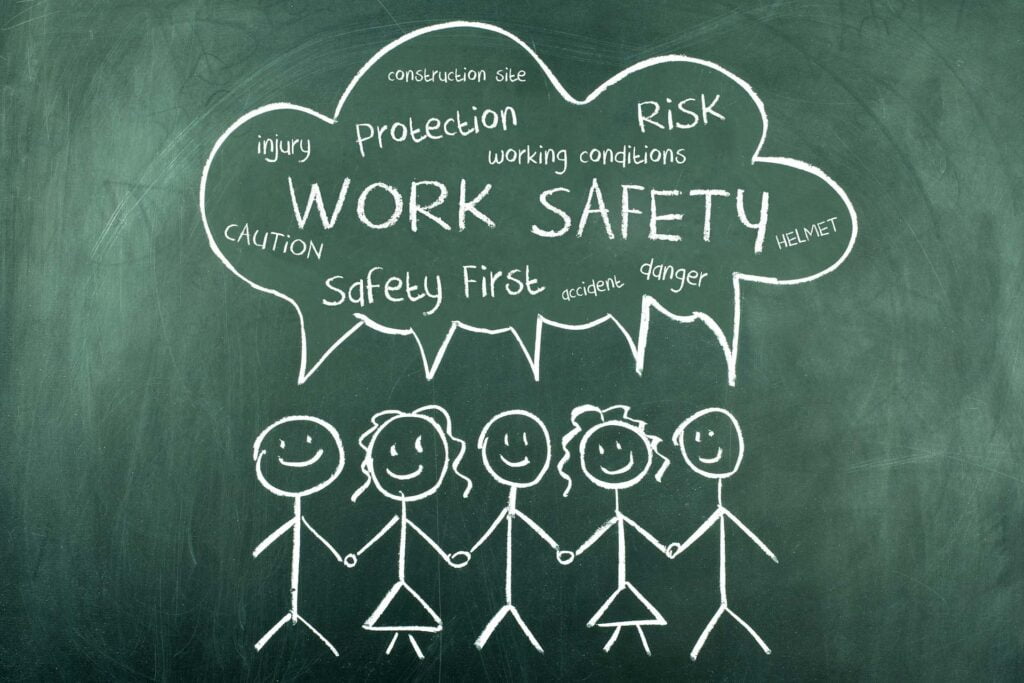
The way we work has changed forever. The gig economy is here to stay, and businesses are adapting to the new reality. Employers are enjoying reduced overhead costs and increased productivity, which means more profits for their businesses.
As for employees, they are enjoying a more flexible work lifestyle, are less stressed due to reduced commute times, and are more motivated when working remotely. Remote employees also feel more valued by their employers due to the level of trust associated with allowing them to work from any location. All these benefits and many others make the work-from-home reality attractive.
However, remote workers are sometimes neglected, especially when it comes to workplace health and safety issues. Since they work alone in isolated locations and without supervision, remote workers face extra safety risks if nobody is around to help them when disaster strikes.
Companies and organizations must realize that the health and safety of off-site workers matter as much as those of their on-site counterparts. Therefore, they need to come up with policies that will cover their employees’ safety, security, and health risks. So, what can be done to reduce the threats of remote working? Keep reading to learn more.
What Is Remote Work?
When you work remotely, it can mean anywhere outside of the office. This could be from your home office, a co-working space, or an isolated location. Most of the time you work alone, and depending on the nature of your work, you may be unable to get immediate attention in case of an emergency.
Employees who work remotely and in isolation include, but are not limited to,
- those working from home,
- park rangers and field scientists (who are, for example, living in a camp in a remote area for several days or weeks),
- those who travel while working,
- long-distance truck drivers,
- security guards,
- construction workers,
- off-site maintenance workers,
- agricultural workers, and
- cleaners (who are, for example, working by themselves at night in an office building).
Some workers may be together in a remote location, working on a month-long project – for instance, installation of heavy equipment. Others may work alone for a short period or for months in an isolated area with limited communication.
The Top 4 Dangers for Remote Workers

Every job has its risks, whether you work on-site or off-site. Things get even riskier for telecommuters in high-isolation areas where accessibility can be a challenge. Remote workers can face many kinds of hazards, which, if not addressed, can severely affect their performance.
So, what are the safety risks for remote workers?
1# Workplace Violence
With more and more people turning to remote work, cases of workplace violence have been on the rise. If a remote worker lives in a place with high crime rates, their productivity will be negatively impacted. Believe it or not, theft is still a major concern for remote workers. It is not uncommon for employees to lose work equipment like laptops or phones, and this can cause tension between the employer and employee.
Additionally, hackers have devised crafty ways of stealing company information. For instance, they can throw USB flash drives near the house of an employee of the company they are targeting, hoping that the employee will pick one up and use it on their work computer.
There have been cases of criminals leaving behind laptops or smartphones on a bus or train, targeting specific people. Hackers install malicious programs on such devices and wait for the targeted users to pick them up. If they use such a device to access their company’s data, hackers gain access to it as well.
2# Internet Problems
In this age where more and more workers go remote, the internet needs to be more reliable. Internet outages can be caused by anything from a fallen tree to a power surge to a storm. Sometimes, internet problems can be caused by a faulty router or hardware failure on your computer.
While some issues are unavoidable, preparedness can save you the headache of missing deadlines. For one, you can use your phone to create a Wi-Fi hotspot. Most modern phones allow you to quickly turn them into a temporary internet backup, and they provide sufficient speed for normal tasks like browsing and sending emails.
A good option would be to invest in a portable pocket router. Most carriers offer these dedicated hotspot devices with high-speed internet. They are great options for freelancers who move a lot when working. Even home users will find these routers useful since they can last for hours on battery power.
You can ask your employer to compensate for an unlimited wireless data plan, especially if a constant connection is necessary for your work.
Alternatively, you can find lots of areas with public Wi-Fi, such as local cafés, food chains like McDonald’s, and many other public places.
3# Power Outages
Remote workers in certain regions, especially developing countries, may be faced with constant power outages, and this can affect their performance and productivity. Some may be living in remote locations where the power source is unreliable. Additionally, adverse weather conditions can also lead to power outages, which sometimes can take days or even weeks to fix.
In such situations, having the right equipment can keep employees working without interruptions. For instance, investing in a good power backup like a laptop power bank or backup generator will ensure that employees keep working even during power outages. Employers can chip in and finance the purchase of such accessories to keep the employees motivated.
Constant communication is vital for remote workers. For instance, if the lights go out and your work impacts others or deadlines are looming, you must notify your boss. But first, get in touch with the power company to get the full details of the situation, including how long it will take for power to be restored.
If the outage is expected to be prolonged, you can look for alternatives like going to the company office if it is located nearby, sharing a desk with a co-worker, or requesting permission to use your friend’s house to complete the tasks.
Nowadays, some cars are equipped with outlets to charge your laptop. And if your car doesn’t have an outlet, you can get a car adapter charger.
4# Natural Phenomena
Natural disasters raise a lot of issues for both employers and employees. Sometimes, a company may be forced to shut down or reduce most of its operations in the aftermath of such acts of nature. These unprecedented events can leave remote employees out of work for unknown periods. For example, remote workers can be affected by natural disasters such as hurricanes, bush fires, heat, and floods, making it impossible to work or, worse, leading to injuries.
Employers are responsible for the safety and health of their employees and must always ensure that they provide a safe and healthy workplace. This includes protecting employees from hazardous conditions before and after a natural disaster strikes. Employers should have a plan in place to minimize the risks to employees. Having a proper mechanism will ensure that employers retain their employees until the situation has been managed.
As an employee, you should also be prepared for such events, especially if you live in areas known to be affected by acts of nature. Have a backup plan ready when faced with a natural disaster. Luckily, technology has made it possible to detect acts of nature in advance, giving you time to relocate to a safer region where you can continue working.
How to Overcome Health Risks While Working Remotely

Having looked at some of the potential dangers and problems that remote workers may face, it is good practice to prepare for such events.
As an employer, when managing your remote workers’ safety issues, there are a few factors that you should consider. These include
- the location of your team,
- the nature of the work,
- the skills and capabilities of the remote workers,
- the underlying health issues of the remote workers,
- the duration of projects,
- the duration the remote workers will be working alone,
- the time of day when the employees will be working alone, and
- how communication with the remote workers will be organized.
Some of the common health risks that remote workers should watch out for include the following:
Eye strain – The freedom to work from anywhere that comes with working remotely can also be a source of eye problems. Your location may not have the ideal lighting (for instance, the ambient lighting in your working environment can force you to squint), or you may be forced to sit too close to your computer screen. Employees should make sure that their workspaces are well lit, preferably with natural light.
Social anxiety – Working remotely may mean working in isolation for prolonged periods. Whether you’re an introvert or an extrovert, if you work alone for so long, you may develop social anxiety and feel nervous when it comes to giving presentations or communicating with colleagues. If not addressed, it can lead to a pattern of thinking that negatively impacts your interaction with other people. To avoid finding yourself in such a situation, it is highly advisable to get involved in community activities and social gatherings with friends and family, or you can talk to a therapist if the situation becomes unbearable.
Constant backaches – Working from your bed or couch can lead to recurring back and neck pains. While it is what most employees picture when transitioning to remote work, it’s a bad habit that can cause severe backaches. Using an ergonomic chair with lumbar support can greatly relieve back and neck pain. It is also advisable to get a standing desk to alternate between sitting and standing while working from home. When you work outside the house, be careful about your posture and choose the right chairs.
Carpal Tunnel Syndrome – You might not know this, but if you type a lot – as is expected from most remote workers – it can lead to discomfort in your wrists or, even worse, the Carpal Tunnel Syndrome. If you experience symptoms like tingling, pain, burning, or numbness in your fingers and thumb, you may want to get checked. To prevent this condition, consider adjusting your keyboard or sitting position to reduce stress on your wrists when typing. Alternatively, consider getting an ergonomic keyboard that gives your wrists the perfect typing angle.
Illness – Remote workers are known to overwork, especially if there isn’t a proper time management system in place. This can lead to stress and drops in performance and productivity. Falling ill while working from home alone can lead to mild depression. That is why having someone to take care of you and talk to can help alleviate feelings of loneliness. If you’ve been having problems focusing on work or getting out of bed lately, you may want to seek treatment since you could be having a serious health problem.
With that in mind, what specific measures can employers and employees take to ensure the safety of the remote working environment?

1# Conduct Risk Assessments
Employers must carry out risk assessments of remote employees. As an employer, you must ensure that the working environment of your employees is safe and suitable. For each of them, assess things like the location of the home office, ventilation, lighting, and the workplace setup, including the chair, desk, computer, and other work equipment.
How you will carry out risk assessments will depend on the type of work your employees will be performing. If a physical inspection is not practical, then a virtual inspection can be arranged. The workspaces should be comfortable, and the employees should use only employer-authorized equipment. It is also advisable to provide first aid kits and fire safety equipment in case of an emergency.
The employer should also maintain regular communication to ensure that the employees follow the company guidelines when working.
2# Perform Regular Monitoring
Employers must put in place clear and consistent management systems that will reduce risks to remote employees. But even with the proper regulations in place, employers must monitor the systems regularly to ensure that they are adequate and effective.
One way to achieve this is by making regular inquiries to make sure that the remote workers are following health and safety practices. Don’t let workers feel left out when reviewing risk assessments. You can allow them to undertake regular self-assessments to detect risks and then follow them up with discussions on the issues that come up.
3# Encourage Employee Involvement
Consider creating a forum that allows all of your employees to share thoughts about their work and any other concerns. Additionally, provide training to your employees through conferences and webinars. For instance, help your remote workers assess electrical and fire hazards while working from home. The following issues should be brought to everyone’s attention:
- The workspace should have unobstructed exits in case of an emergency.
- When working from the attic or basement, remote workers should be mindful of flammable or hazardous materials.
Where possible, send a senior member of the company like a manager or supervisor to pay a visit to remote workers’ homes to provide support and advice.
Remote employees need to feel part of the company, and allowing them to provide feedback on their views and experiences is one way of encouraging them to get involved in company decisions.
4# Set Up Proper Communication Channels
When your employees get ill, who do they report to? They need to know the procedures for reporting work-related incidents or accidents and any other health or safety issues. Assign competent personnel to handle the health and safety concerns of your remote workers as soon as they arise.
Additionally, be sure to pass the right information about the company policies on health and safety to your workers. Showing that you care about your remote workers’ well-being will increase their trust and loyalty, leading to improved morale and increased productivity.
You should also monitor your workers’ sickness rates and use the analysis to detect any worrying patterns. If the turnover is high, then it may indicate factors like work-related stress or overworking.
5# Conduct Regular Checkups
Consider monitoring the health of your remote workers periodically by booking appointments for them to receive health checkups. For instance, if your remote workers use computers all day long, you can arrange for them to receive free eye checkups every once in a while.
Additionally, your employees must be in good mental health to deliver quality work. If you notice the performance and productivity levels of any of your employees dropping, take the initiative to inquire about what the issue could be. The worker may have been overwhelmed by an increase in their workload. Or maybe the employee is ill but doesn’t want you to know for fear of losing his/her job.
The best approach to check on your remote workers is to organize one-on-one calls with each of them to freely discuss concerns and issues that could be affecting them. Encourage them to take part in mindfulness activities like yoga or meditation, or organize for them to engage with a behavioral therapist.
But how can an employer detect changes in the performance of their employees? By implementing the use of employee-monitoring tools, of course! For instance, Traqq is a tool that monitors the activities of employees and analyzes their performance levels. You can view detailed reports on each of your employees’ performance and single out the low-performing ones. Your employees’ well-being is what matters most, and remote work software like Traqq makes it easy for you to monitor everyone on your team.
6# Organize Your Working Environment
Working from home can pose risks to both the employer and employee. For instance, thieves can break in and steal a company laptop containing confidential information, thereby putting company data at risk. To prevent this, you should set up a workspace in a safe place –a room that can be locked will do.
Likewise, remote workers should ensure that the rooms they are working in are easily accessible in case of fire or other emergencies. When working with equipment, be sure to use it correctly while taking care of your well-being.
Avoid storing work items on high shelves or working in a messy environment with tools or equipment everywhere to avoid hurting yourself, your family, and your pets.
Conclusion
Most people consider work-from-home jobs completely safe. However, remote workers are still faced with health and safety issues that affect their productivity. Employers still have the responsibility to take care of their employees when they work from home. That said, both employers and employees must address these issues in depth to make sure that the remote working environment is safe and conducive to productive thought

